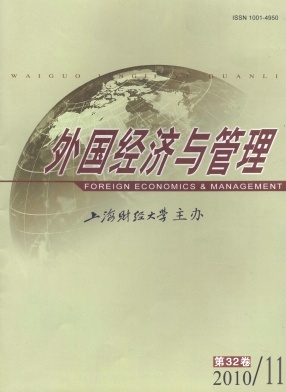家族企业成长困境与解决机制探析——基于家族逻辑和企业逻辑视角
外国经济与管理 2010 年 第 32 卷第 11 期, 页码:58 - 65
摘要
参考文献
摘要
作为家族系统和企业系统的重叠,家族企业从创立伊始就面临着"家族情感逻辑"和"企业能力逻辑"之间的冲突。很多家族企业因缺乏处理这种冲突的有效机制而陷入了成长困境。在家族企业二元逻辑的基础上,本文分析了家族企业在委托代理、权力与决策以及人力资源管理方面的困境,并且构建了旨在解决家族企业成长困境的财产关系界定机制、资源转换机制和共同治理机制。
[1]Lansberg,I.Managing human resources in family firms:The problem of institutional overlap[J].Organizational Dynamics,1983,12(1):39-46.
[2]Stephen Swartz.The challenges of multidisciplinary consulting to family-owned businesses[J].Family Business Review,1989,2(Dec.):329-331.
[3]Gersick,K E,Davis,J A,Hampton,M M,and Lansberg,I.Generation to generation:Life cycles of the family business[M].Boston:Harvard University Press,1997.
[4]Habbershon,T G,and Williams,M L.A resource-based framework for assessing the strategic advantages of family firms[J].Family Business Review,1999,12(1):1-25.
[5]Larson,A,and Starr,J A.A network model of organization[J].Entrepreneurship Theory and Practice,1993,17(2):5-15.
[6]Ostrom,E.Social capital:A fad or a fundamental concept?[A].in Partha Dasgupta,and Ismail Serageldin(Eds.).Social capi-tal:A multifaceted perspective[C].Washington,DC:The World Bank,2000.
[7]William S Schulze,Michael H Lubatkin,Richard N Dino,and Ann K Buchholtz.Agency relationships in family firms:Theoryand evidence[J].Organization science,2001,12(2):99-116.
[8]Miller,D,Lee,J,Chang,S,and Le Breton-Miller,I.Filling the institutional void:The social behavior and performance offamily versus non-family technology firms in emerging markets[J].Journal of International Business Studies,2009,40(5):802-817.
[9]Neri Karra,Paul Tracey,and Nelson Phillips.Altruism and agency in the family firm:Exploring the role of family,kinship,andethnicity[J].Entrepreneurship Theory and Practice,2006,30(11):861-877.
[10]Elaine Kepner.The family and the firm:A coevolutionary perspective[J].Family Business Review,1991,4(Dec.):445-461.
[11]Dyer,W G.Cultural change in family firms:Understanding and managing business and family transitions[M].San Francisco:Jossey-Bass,1986.
[12]Hoy,F,and Vesser,T G.Emerging business,emerging field:Entrepreneurship and the family firm[J].EntrepreneurshipTheory and Practice,1994,19(1):9-23.
[13]Thomas,K W,and Kilmann,R H.Conflict mode instrument[M].Tuxedo,NY:Xicom,1974.
[14]Hollander,B,and Elman,N.Family-owned businesses:An emerging field of inquiry[J].Family Business Review,1988,1(2):145-164.
[15]Ritch L Sorenson.Conflict management strategies used by successful family businesses[J].Family Business Review,1999,12(4):325-339.
[2]Stephen Swartz.The challenges of multidisciplinary consulting to family-owned businesses[J].Family Business Review,1989,2(Dec.):329-331.
[3]Gersick,K E,Davis,J A,Hampton,M M,and Lansberg,I.Generation to generation:Life cycles of the family business[M].Boston:Harvard University Press,1997.
[4]Habbershon,T G,and Williams,M L.A resource-based framework for assessing the strategic advantages of family firms[J].Family Business Review,1999,12(1):1-25.
[5]Larson,A,and Starr,J A.A network model of organization[J].Entrepreneurship Theory and Practice,1993,17(2):5-15.
[6]Ostrom,E.Social capital:A fad or a fundamental concept?[A].in Partha Dasgupta,and Ismail Serageldin(Eds.).Social capi-tal:A multifaceted perspective[C].Washington,DC:The World Bank,2000.
[7]William S Schulze,Michael H Lubatkin,Richard N Dino,and Ann K Buchholtz.Agency relationships in family firms:Theoryand evidence[J].Organization science,2001,12(2):99-116.
[8]Miller,D,Lee,J,Chang,S,and Le Breton-Miller,I.Filling the institutional void:The social behavior and performance offamily versus non-family technology firms in emerging markets[J].Journal of International Business Studies,2009,40(5):802-817.
[9]Neri Karra,Paul Tracey,and Nelson Phillips.Altruism and agency in the family firm:Exploring the role of family,kinship,andethnicity[J].Entrepreneurship Theory and Practice,2006,30(11):861-877.
[10]Elaine Kepner.The family and the firm:A coevolutionary perspective[J].Family Business Review,1991,4(Dec.):445-461.
[11]Dyer,W G.Cultural change in family firms:Understanding and managing business and family transitions[M].San Francisco:Jossey-Bass,1986.
[12]Hoy,F,and Vesser,T G.Emerging business,emerging field:Entrepreneurship and the family firm[J].EntrepreneurshipTheory and Practice,1994,19(1):9-23.
[13]Thomas,K W,and Kilmann,R H.Conflict mode instrument[M].Tuxedo,NY:Xicom,1974.
[14]Hollander,B,and Elman,N.Family-owned businesses:An emerging field of inquiry[J].Family Business Review,1988,1(2):145-164.
[15]Ritch L Sorenson.Conflict management strategies used by successful family businesses[J].Family Business Review,1999,12(4):325-339.
引用本文
代吉林, 张支南. 家族企业成长困境与解决机制探析——基于家族逻辑和企业逻辑视角[J]. 外国经济与管理, 2010, 32(11): 58–65.
导出参考文献,格式为:





 6024
6024  775
775

